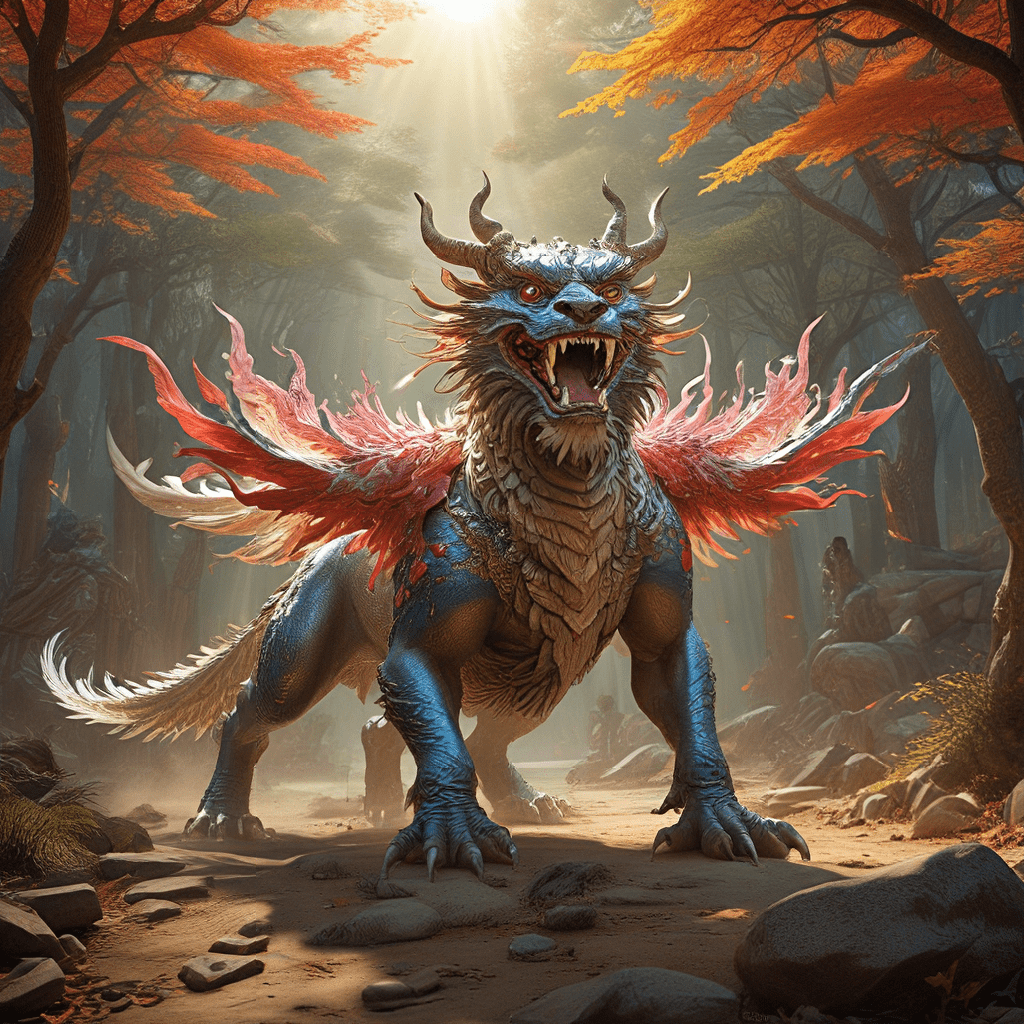Introduction to Finnish Mythology and its Sacred Symbols
Finnish mythology, steeped in the natural world, comprises a captivating tapestry of sacred symbols that embody profound meanings and powers. From the towering Tree of Life to the enigmatic Rune Stones, each symbol reflects a profound connection to the elements, the cosmos, and the spirit world. These symbols permeate the Finnish psyche, guiding beliefs, practices, and artistic expressions. Embracing these symbols unlocks a deeper understanding of the unique worldview and cultural heritage of the Finns.
The Tree of Life: Yggdrasil and Its Cosmic Significance
Yggdrasil, the towering Tree of Life, stands as the central axis and connecting force within Finnish mythology. Its vast branches stretch across the nine realms, linking the heavens, earth, and the underworld. Yggdrasil symbolizes the interconnectedness of all things and serves as a conduit for communication between the worlds. The tree's roots delve into the underworld, where the Norns, goddesses of fate, reside. Its trunk ascends through Midgard, the realm of humans, and its branches extend into Asgard, the home of the gods. Yggdrasil represents the cosmic order and balance, embodying the cycle of life, death, and rebirth.
The Rune Stones: Ancient Inscriptions and Their Mystic Powers
Rune Stones, bearing ancient inscriptions, hold immense power in Finnish mythology. These enigmatic carvings, often depicting sacred symbols, were believed to possess magical properties and were used for divination, healing, and protection. Each rune carried a specific meaning, embodying a force of nature, a concept of creation, or an aspect of human experience. The stones were revered as sacred objects, believed to connect to the spirit world and channel divine energy. Understanding the runes enabled individuals to navigate the complexities of life, communicate with the gods, and decipher the mysteries of the universe.
6. The Bear: A Totemic Animal with Shamanic Associations
In Finnish mythology, the bear holds a profound significance as a totemic animal. It embodies strength, courage, and wisdom. Bears were revered as sacred beings, intermediaries between the human and spirit worlds. Shamans often took on the bear's form, accessing its primal power and gaining the ability to traverse the realms of existence. Bear rituals and ceremonies played a vital role in Finnish culture, honoring the animal's spiritual connection and seeking its guidance and protection.
7. The Väki: Spirit Guardians and Protectors of the Land
The Väki are nature spirits that permeate the Finnish landscape, safeguarding the land and its inhabitants. These entities embody the essence of forests, lakes, mountains, and other natural features. The Väki are revered as protectors and guardians, offering guidance and assistance to those who respect and honor their domain. Respecting the Väki ensures harmony between humans and the environment, fostering a deep connection to the natural world.
8. The Ukko: The Thunder God and Master of the Elements
Ukko, the mighty Thunder God, reigns supreme over the elements in Finnish mythology. Wielding his thunderbolt, he commands the storms and ensures the fertility of the land. Ukko represents the potent forces of nature, reminding humans of their insignificance in the face of cosmic power. His presence instills both awe and humility, underscoring the interconnectedness of all living beings.
9. The Louhi: The Evil Sorceress and Ruler of Pohjola
Louhi, the wicked sorceress, resides in Pohjola, the northernmost land in Finnish mythology. She possesses immense magical power and is responsible for much of the evil that plagues the world. Louhi's cunning and deceit make her a formidable adversary, and heroes must summon all their courage and wit to overcome her treacherous schemes.
10. The Kalevala: The Epic Poem that Embodies Finnish Mythological Beliefs
The Kalevala, an epic poem compiled in the 19th century, serves as a literary masterpiece that encapsulates Finnish mythology and beliefs. The poem narrates the adventures of Väinämöinen, Ilmarinen, and other legendary heroes as they encounter gods, spirits, and mythical creatures. The Kalevala offers a comprehensive tapestry of Finnish folklore, weaving together tales of love, revenge, magic, and the eternal struggle between good and evil.
FAQ
What is the significance of Yggdrasil in Finnish mythology?
- Yggdrasil is the Tree of Life that connects the nine realms, symbolizing the interconnectedness of all things and the cosmic order.
What powers do Rune Stones possess?
- Rune Stones bear ancient inscriptions believed to have magical properties, used for divination, healing, and protection.
How are bears revered in Finnish mythology?
- Bears are totemic animals embodying strength, courage, and wisdom. Shamans often took on the bear's form to access its primal power.
Who are the Väki?
- The Väki are nature spirits that safeguard the land and its inhabitants, offering guidance and protection to those who respect their domain.
What role does Ukko play in Finnish mythology?
- Ukko is the Thunder God who commands the elements, representing the potent forces of nature and instilling awe and humility in humans.



